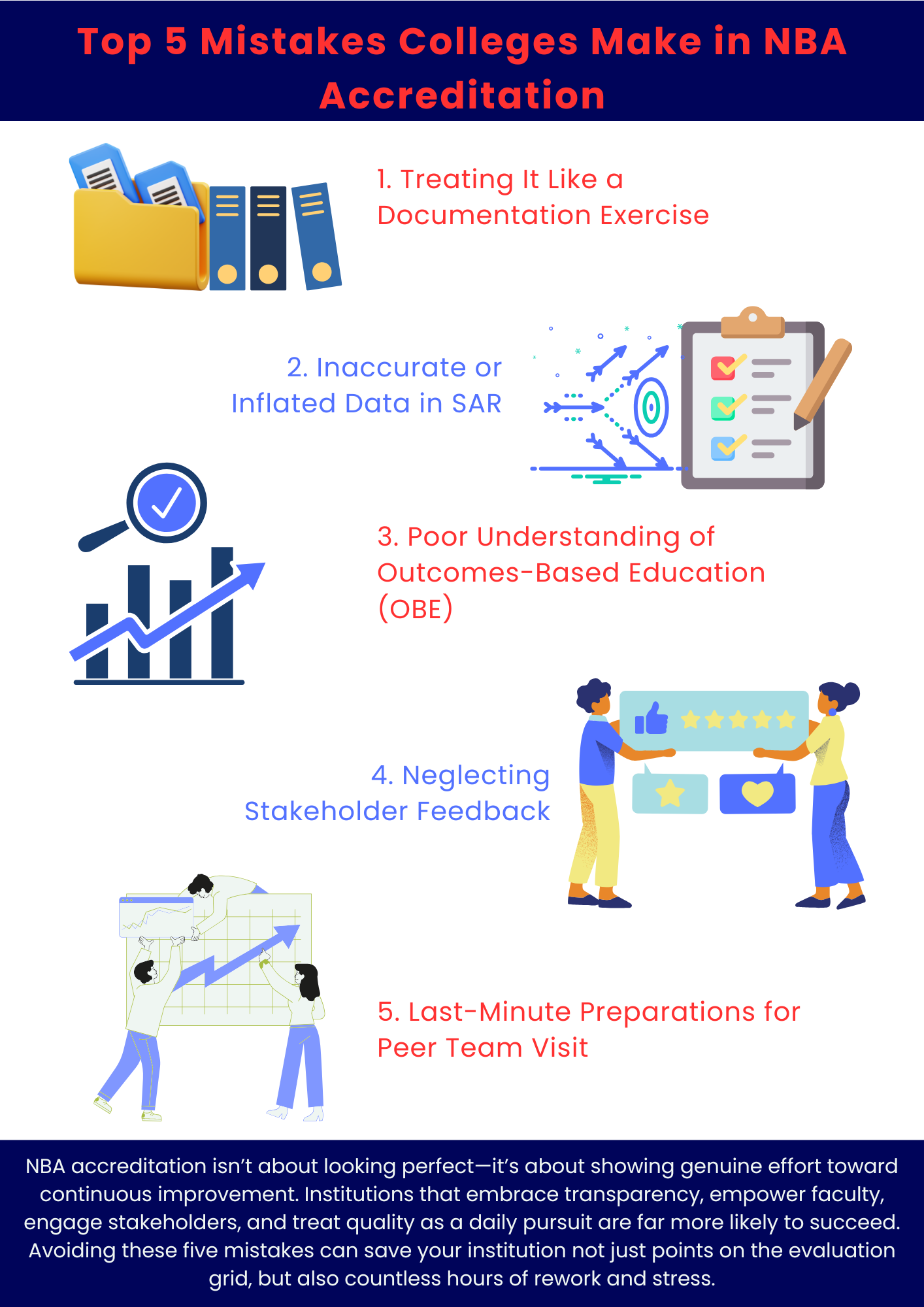
Learn the common pitfalls that can derail your NBA accreditation journey and how to avoid them.

NBA Accreditation is about quality standards and continuous improvement. Institutions often approach it as mere documentation work. The goal becomes to prepare the report and pass the visit, not actual academic enhancement.
What to do instead: Build a quality culture through regular monitoring and academic improvements—not just during the cycle.
The Self-Assessment Report (SAR) is the heart of NBA. Providing inconsistent, false, or exaggerated data can damage your credibility during peer review.
Tip: Be honest. Highlight gaps and show how you are addressing them through an improvement plan.
Many institutions treat COs, POs, and PEOs as checkboxes, not actual drivers of curriculum and assessment.
Solution: Regularly train faculty and adopt tools that simplify and track CO-PO mappings and outcome assessment.
Feedback from students, alumni, and employers is often collected just for formality—and never used meaningfully.
Fix: Act on feedback and document changes made. Close the feedback loop and showcase the improvements.
Colleges scramble to prepare records and facilities when the visit date is near—this reactive approach shows lack of readiness.
Pro tip: Conduct internal audits, mock visits, and routine evaluations throughout the year to stay peer-visit-ready.
NBA Accreditation isn’t about being perfect. It’s about continuous improvement, transparency, and genuine effort toward academic quality. Avoid these 5 mistakes to make your journey smoother and more effective.